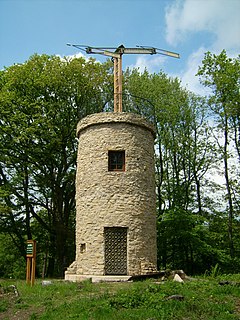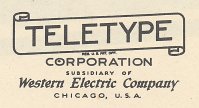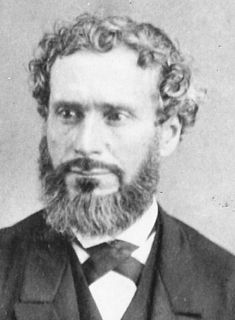This article includes a list of references, but its sources remain unclear because it has insufficient inline citations .(April 2012) (Learn how and when to remove this template message) |
Royal Earl House (9 September 1814 –25 February 1895) was the inventor of the first printing telegraph, which is now kept in the Smithsonian Institution. His nephew Henry Alonzo House is also a noted early American inventor.

The printing telegraph was invented by Royal Earl House in 1846. House's equipment could transmit around 40 instantly readable words per minute, but was difficult to manufacture in bulk. The printer could copy and print out up to 2,000 words per hour. This invention was first put in operation and exhibited at the Mechanics Institute in New York in 1844.

The Smithsonian Institution, established on August 10, 1846 "for the increase and diffusion of knowledge," is a group of museums and research centers administered by the Government of the United States. The institution is named after its founding donor, British scientist James Smithson. Originally organized as the "United States National Museum," that name ceased to exist as an administrative entity in 1967.
Henry Alonzo House was an American inventor who developed machinery and processes that have had a lasting impact on several industries.
Royal Earl House spent his childhood in Vermont experimenting, designing, and building, a habit which would earn him distinction as an adult. He once caught a toad, skinned it, placed a set of springs in the skin and made it hop. Around 1840, he went to Buffalo, New York to live with relatives and attend law school in that town. However, he read a work on electricity which so inspired him that he decided to give up law and study the science of electricity instead. He was also interested in mechanics, chemistry and magnetism.

Vermont is a state in the New England region of the northeastern United States. It borders the U.S. states of Massachusetts to the south, New Hampshire to the east, New York to the west, and the Canadian province of Quebec to the north. Vermont is the second-smallest by population and the sixth-smallest by area of the 50 U.S. states. The state capital is Montpelier, the least populous state capital in the United States. The most populous city, Burlington, is the least populous city to be the most populous city in a state. As of 2015, Vermont was the leading producer of maple syrup in the United States. It was ranked as the safest state in the country in 2016.

Toad is a common name for certain frogs, especially of the family Bufonidae, that are characterized by dry, leathery skin, short legs, and large bumps covering the parotoid glands.

Buffalo is the second largest city in the U.S. state of New York and the largest city in Western New York. As of July 2016, the population was 256,902. The city is the county seat of Erie County and a major gateway for commerce and travel across the Canada–United States border, forming part of the bi-national Buffalo Niagara Region.
By 1846, the Morse telegraph service was operational between Washington, DC, and New York. Royal Earl House patented [1] his printing telegraph that same year. He linked two 28-key piano-style keyboards by wire. Each piano key represented a letter of the alphabet and when pressed caused the corresponding letter to print at the receiving end. A "shift" key gave each main key two optional values. A 56-character typewheel at the sending end was synchronised to coincide with a similar wheel at the receiving end. If the key corresponding to a particular character was pressed at the home station, it actuated the typewheel at the distant station just as the same character moved into the printing position, in a way similar to the daisy wheel printer. It was thus an example of a synchronous data transmission system. House's equipment could transmit around 40 instantly readable words per minute, but was difficult to manufacture in bulk. The printer could copy and print out up to 2,000 words per hour. This invention was first put in operation and exhibited at the Mechanics Institute in New York in 1844.

Telegraphy is the long-distance transmission of textual or symbolic messages without the physical exchange of an object bearing the message. Thus semaphore is a method of telegraphy, whereas pigeon post is not.
In 1886 and 1887, when the Royal E. House telegraph company was producing the printing telegraph, the Morse Telegraph company tried to enjoin (legally prevent) them from infringing on the Morse patents. Morse claimed the sole right of transmitting intelligence by electricity, utilizing the Morse code. The courts decided the House Company did not infringe the Morse patent, as the messages using the House system were all printed on a slip of paper, without the use of Morse Code.

Morse code is a character encoding scheme used in telecommunication that encodes text characters as standardized sequences of two different signal durations called dots and dashes or dits and dahs. Morse code is named for Samuel F. B. Morse, an inventor of the telegraph.
Later the House Co. and the Morse Co. joined and formed the Great Western Telegraph Company.










